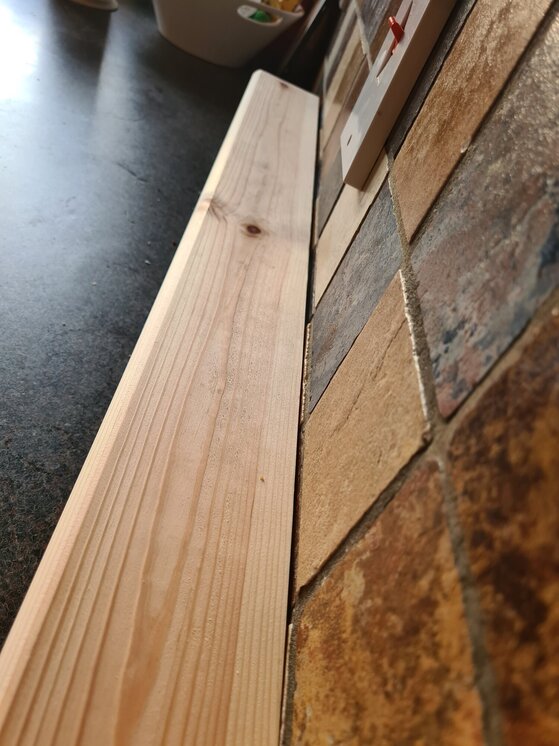Hi all.
Advice would be appreciated on whether I should use some sort of levelling compound to even out irregular lippage on the existing tiles before I start, or whether I should be okay with back buttering or otherwise increasing/ decreasing the height of adhesive whenever I encounter a troublesome area.
I'm a first timer, looking to tile my kitchen splashback with 6mm thick 10x30cm metros. I need to tile over the existing tiles, which are 10x10cm. The previous job looks 'okay' but there are definite areas where small lips protrude between tiles, which I'm assuming over the course of the area will result in my over-tiling being noticeably uneven.
I've seen loads of posts about floor levelling screeds and the like, but not much in relation to what I might use to even out my wall, or even whether I actually need to do so. I wondered about attacking it with an angle grinder but not sure whether I'd be on a hiding to nothing going down that route.
I'd really welcome any advice about what product I should use.
Thank you
Advice would be appreciated on whether I should use some sort of levelling compound to even out irregular lippage on the existing tiles before I start, or whether I should be okay with back buttering or otherwise increasing/ decreasing the height of adhesive whenever I encounter a troublesome area.
I'm a first timer, looking to tile my kitchen splashback with 6mm thick 10x30cm metros. I need to tile over the existing tiles, which are 10x10cm. The previous job looks 'okay' but there are definite areas where small lips protrude between tiles, which I'm assuming over the course of the area will result in my over-tiling being noticeably uneven.
I've seen loads of posts about floor levelling screeds and the like, but not much in relation to what I might use to even out my wall, or even whether I actually need to do so. I wondered about attacking it with an angle grinder but not sure whether I'd be on a hiding to nothing going down that route.
I'd really welcome any advice about what product I should use.
Thank you






